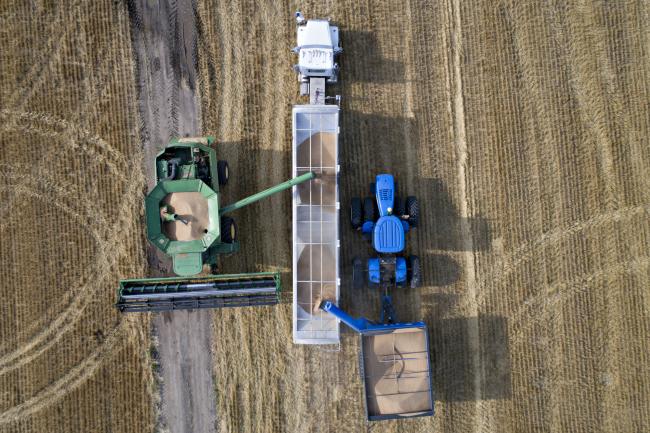(Bloomberg) -- There will be plenty of amber waves of grain this year across America’s breadbasket.
That’s been confirmed this week as traders and analysts toured Kansas, Nebraska and Oklahoma to measure yield potential for wheat crops. Fields were looking green and lush after a wet spring helped boost soil moisture.
Yields in Kansas, the largest U.S. grower of winter wheat, are estimated at 47.2 bushels an acre, according to the final tally from surveys on 469 stops during the annual Wheat Quality Council crop tour. That compares with the average of 37 bushels measured on last year’s tour and the U.S. Department of Agriculture’s final estimate of 38.
July futures for hard red winter wheat have slumped more than 20 percent this year on reports of good conditions for U.S. crops. The grain variety is mostly used to make bread.
America’s heartland has seen a deluge of rain this spring. While that’s bad for corn farmers who need fields to dry out so they can start planting, it’s been a boon for winter wheat, which is already in the ground. The heavy showers are bringing relief after prolonged drought conditions plagued the Great Plains.
Better yields will be a buffer for a smaller planted area. Low prices prompted farmers to cut acres to the lowest in a century. The final harvest in Kansas could bring output of 306.5 million bushels, according to the average estimate of participants on the three-day crop tour. Last year, the state produced 277.4 million, USDA data show.
Winter wheat is planted in the fall and lies dormant during the winter months until warmer weather triggers further growth. More than 70 tour participants weaved through Kansas to measure fields, on routes from Colby to Wichita. The so-called crop scouts also ventured into neighboring Oklahoma and Nebraska.
Detailed yield results from the tour:
